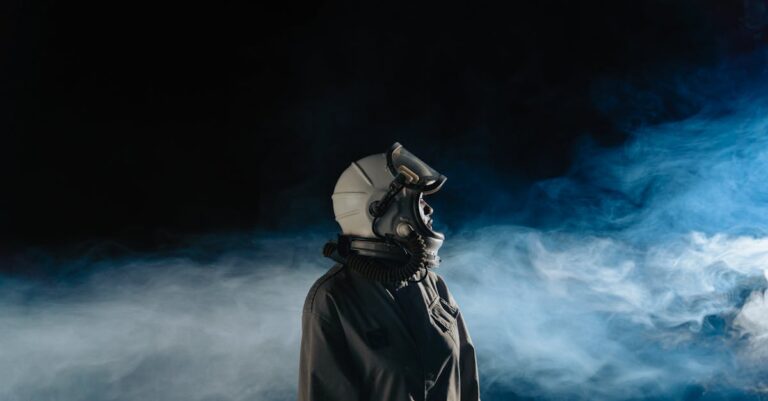
The rain hammered against the corrugated iron roof of the Helix, a sound like a thousand frantic fingers drumming. Below, the city – or what was left of it – bled into an oppressive grey. Layers upon layers of concrete and steel stretched downwards, dissolving into the black maw of the ocean. The Helix wasn’t a building; it was a submerged data center, a honeycomb of servers humming beneath the waves. Salt spray clung to everything, tasted metallic on my tongue.
I adjusted the bio-filter mask, pulling it tighter over my face. The air inside was thick with recycled humidity and the faint scent of ozone – a constant companion. My fingers danced across the holographic interface, scrolling through cascading lines of code that resembled frozen lightning. We were chasing echoes. Not the kind you hear, but ones embedded in DNA.
“Anything promising, Silas?” Dr. Chen’s voice crackled over the comm. He was back at base, a hundred meters deeper in the city’s guts, monitoring seismic activity and atmospheric pressure. His tone was polite, professional—a carefully constructed shield against the unsettling reality of what we did.
I ignored him and dug deeper, pushing through a complex strand of human DNA – traced back to a settlement that predated even the oldest maps. This particular sequence held a recessive mutation, one we’d flagged months ago during preliminary scans. It manifested as a “phantom nostalgia”—a physical bloom of historical data triggered by specific genetic markers.
“Found it,” I muttered, my fingers accelerating across the interface. A schematic appeared – a sprawling network of canals, almost impossibly intricate, carved into the coastline. Vessels, unlike anything modern mariners would recognize, navigated those waterways. “Pre-industrial trade routes. Extensive agricultural systems.”
“Show me the cross-referencing,” Chen ordered, his voice clipped.
The holographic projection shifted, overlaying the ancient waterways with a modern satellite image of a region currently submerged off the coast. The ghostly canals matched perfectly with the topography, a disconcerting reminder of a vanished past.
“The scale…it’s immense,” I said, my gut tightening. “And look at the concentration of unusual metals in the soil samples recovered from this area – tungsten, tellurium…rare elements.”
“The bloom isn’t just data, Silas. It’s physical manifestation,” Chen stated flatly. “We’re getting reports from the resonance chambers—localized temporal distortions.”
I moved to a console, activating the Resonance Echo Monitor. The screen filled with fractal patterns swirling like smoke in a wind tunnel. Static bled through, interspersed with images – fleeting glimpses of men in thick woolen cloaks hauling timber, women tending fields under a sky filled with more stars than I ever imagined.
“The bloom is spreading,” I announced, my voice grim. “It’s not just replicating routes; it’s reconstructing the ecological collapse.”
The Helix was built on a foundation of salvaged data – fragments ripped from the digital bones of dead civilizations. We were miners, digging for forgotten knowledge, desperately trying to piece together a future based on the mistakes of those who came before. But sometimes, the past wasn’t just data; it felt like a weight pressing down on you.
A cough echoed from the control room. Leo, our youngest bioinformaut, a kid barely out of his twenties with the haunted look of someone who’d seen too much. He was hunched over a smaller console, his fingers flying across the keyboard.
“Dr. Chen wants you to focus on Sequence 734,” he said, his voice muffled by the headset. “He says it’s intensifying.”
“Sequence 734…that’s the one linked to the Pearl River Delta,” I replied, already pulling up the data. The bloom here was different, more violent.
“It’s not just repeating,” Leo said, his voice strained. “It’s…rewriting itself. The trade routes are changing. New settlements are appearing, mirroring the old ones but with advanced irrigation systems – genetically modified crops.”
He ran a diagnostic. “The bloom is actively seeding itself into adjacent gene pools within the Helix personnel.”
My breath caught. “You’re saying it’s infecting us?”
“Not exactly,” Leo said quickly, his fingers still a blur. “The mutation is dormant until triggered by specific environmental stimuli – high salinity, increased oxygen levels… conditions we’re creating within the Helix.”
I stared at my hands, feeling a strange warmth spreading through my veins. It was subtle, a fleeting sense of familiarity with something I couldn’t name – the rhythm of a ship’s engine, the scent of woodsmoke, the taste of fermented rice.
“We’re becoming part of it,” I whispered.
“The American startup, Chronosync, they’re not just building a data center,” Chen’s voice cut through the comm. “They’re accelerating the process.”
Chronosync. A name whispered with a mixture of awe and dread within our community. They were the ones pushing for deeper integration, claiming they could ‘unlock humanity’s potential’ by merging their genetic code with the recovered patterns.
“They’re using a modified form of nanobot algae to stimulate the bloom,” I said, my fingers hammering at the interface. “It’s a vector—a biological key.”
The holographic display shifted again, showing the bloom spreading exponentially. Rivers of genetic code were now flowing through the Helix’s ventilation system, coating every surface with a shimmering, iridescent film.
“Chronosync isn’t trying to predict the future,” Chen stated, his voice now laced with a cold fury. “They’re trying to *build* it.”
I looked down at my hands, noticing a faint discoloration spreading beneath the skin. A single shimmering scale, like something from an ancient fish, began to form on my wrist—a tiny, terrifying echo of a world lost.
“We need to shut it down,” I said, my voice tight with urgency. “All systems.”
“Impossible,” Chen replied. “The bloom has already infiltrated the Helix’s core programming.”
Suddenly, a new signal registered on my console – a complex cascade of genetic code unlike anything I’d ever seen. It wasn’t just replicating the past; it was rewriting *present* reality.
“Chronosync is directly targeting our gene pool,” I said, a sickening realization washing over me. “They’re not just building the future; they’re erasing our own.”
I ripped off my bio-filter mask, a sharp intake of breath filling my lungs with the salt-saturated air. The taste was different now, laced with something metallic and ancient – a tangible reminder that we were drowning in the echoes of civilizations past.
The rain continued to beat against the corrugated iron roof, a relentless rhythm mirroring the frantic pulse of the bloom within me. It wasn’t just data anymore; it was a current, pulling us under, promising to reshape us into something utterly alien.
I reached for the emergency override – a last-ditch effort to sever our connection with the bloom. But as my fingers hovered over the activation button, I noticed something on my wrist – a fully formed scale, shimmering with an unnatural iridescence. It wasn’t just mimicking the past; it was becoming *part* of me, a testament to a world that would never be.
The future wasn’t something to predict; it was already being woven, layer by layer, into our very DNA. And the architects of that future were not people anymore—they were echoes, resurrected by the relentless tide.


